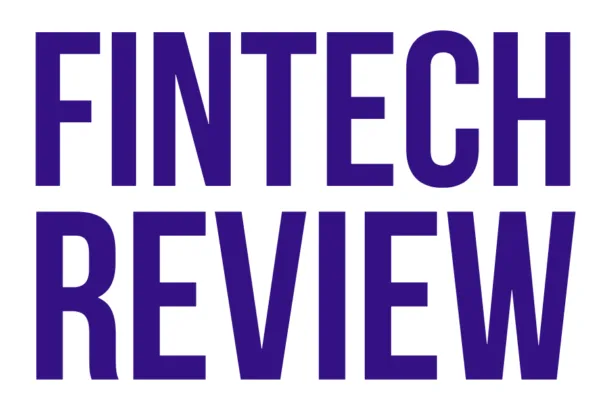Article reviewing all the major neobanks around the world by Alex Beck, founder of Clara, a fintech comparison site to help people find and compare the best new finance products.
Since the global financial crisis of 2008, the trust of consumers for traditional finance has been slashed. Banks for so long charged a host of fees that felt extortionate to most people. From this, a number of scrappy banking startups popped up to offer cheaper, faster, and better banking services that were digital first.
The rise of neobanks is not just contained to the US or Europe. It has been a worldwide trend, with more than 248 funded neobanks popping up in the last year. The United States has the most digital only bank customers, topping 23 million users, and it continues to grow rapidly as one of the most mature banking markets. Research from McKinsey suggests that by 2024 there will be 47.5 million digital bank account holders in the US.
What are some of the top players in the US?
Chime is the largest US neobank with over 13 million users. They were founded in 2013 in San Francisco and have raised over 1.5 billion dollars from the likes of Sequoia, General Atlantic and Tiger Global Management. They offer fee free accounts, free overdraft and a 0.50% APY savings account. Furthermore, they are built on top of banking services provided by Bancorp.
Current is a US digital bank with more than 4 million active users. They were founded in 2015 and have raised 400 million dollars from venture capital firms like Tiger Global Management, Andreessen Horowitz and others. They offer a fee free current account, ATM withdrawal free and teen banking.
Aspiration was founded in 2013 and boasts of 3 million active users. Since inception, they have raised 250 million dollars. Their point of difference is that aspire to be a sustainable bank: Aspiration do not work with any companies contributing to fossil energy. They have up to 10% cash back on green purchases, and you can offset your carbon emissions from your car.
Varo was founded in 2015 and has over 2.7 million users. The neobank has raised 992 million dollars to date. Varo has a similar offering to the other banks, such as free ATM withdrawals across a large network, free overdraft and faster deposits. They also do have one of the most competitive savings rates, 2% APY.
Bright Money was founded in 2019, and have raised 30 million dollars since inception. It offers a basic bank account, but its main point of differentiation is that Bright Money helps you build a financial plan to pay down debt and build credit. The neobank uses AI to work out how to save you money from fees, or bad deals, and they also automatically help you build credit.

Qube Money was founded in 2019, and have raised 4 million dollars to date. It is a bank account that also offers budgeting with envelopes. They have built a comprehensive budgeting system designed for singles and couples to learn to better manage their money.
Dave is a Mark Cuban-backed startup founded in 2016 that has raised 173 million dollars to build an alternative banking app. Dave boasts over 10 million users and offers a similar slew of features than the other major neobanks. They offer cash advances, credit building help, no fees and a side hustle feature to help you find extra work.
MoneyLion is a 2013 founded neobank that has raised 477 million dollars and is now listed on the NYSE. Their main point of difference is that they help their customers auto invest into the stock market and give them access to “Buy Now, Pay Later” on any purchases. Alongside these features are a slew of familiar features ($1,000 overdraft, faster pay cheque deposits, credit building and financial tracking.)
What are the top neobanks in the UK?

Monzo was started in 2015 and has 5.8 million users. The neobank has raised 648 million dollars since inception. They offer a fee free UK bank account, with a competitive 1.07% APY saving rate. They also have built a PFM that connects all your other bank accounts into one interface, and they offer overdraft ranging £1000-15,000.
Revolut, founded in 2015, has 15 million users and has raised a whopping 1.7 billion dollars to date. They started out as a multi-currency digital wallet that offered fee-free foreign exchange. Since founding, Revolut has expanded its offering and launched across the EU, Asia, Australia and the US. They now offer business banking, free current accounts, multiple currency accounts, crypto and stock trading.
Starling was founded in 2014 and has raised 922 million dollars. The neobank has over 2.1 million users across the UK. Starling has taken a different path than other UK neobanks, focusing on more traditional and profitable banking services such as personal current accounts and business banking, but also teenager banking. Starling has won several UK awards for their bank account usability and design.
Monese was founded in 2013 and has over 1.8 million users. The neobank has raised 170 million dollars since inception. They’ve been competing with Revolut to expand aggressively across the EU. They are a little less feature laden than their peers but still focus on budgeting, fee-free accounts and free international transfers.
Tandem was founded in 2015 and has raised 175 million dollars to date. Tandem was initially focused on offering credit cards, while aiming to be a company that worked for social change. They now are focused on being a green bank. They do this by offering green mortgages and loans to those people who want to make their homes more sustainable and green.
Atom, founded in 2014, has raised 639 million dollars to date. They were one of the first neobanks to offer mortgages in the UK. They also have a 1.45% savings account.
Wise started its life as a remittance company in 2011. Wise raised 1.3 billion dollars, has over 6 million users and is now listed on the London Stock Exchange. The fintech company in the past years burgeoned into a full service multi-currency bank account for consumers and businesses.
What are some top neobanks in the EU?
N26 is one of the names that will likely come to mind when you think of neobanks. They are one of the biggest neobanks and have been aggressively expanding across the globe. They have over 7 million users, started in 2013 and have raised 1.7 billion dollars. The Berlin-based fintech now offers amongst other things an insurance offering, buy now pay later, a free bank account and free FX.
Bnext is one of the first Spanish neobanks. They have raised 40 million dollars to date and started in 2017. Their offering is not unlike other neobanks with savings tools, virtual cards, budgeting tools and free international money transfer.

Bunq is a Dutch neobank started in 2012. They’ve raised 250 million dollars since inception. They have chosen a different business model, as Bunq are one of the few neobanks that charge for their basic account (3 EUR a month.) The basic account does not really offer anything any of the free accounts also offer.
Lunar is a 2015 startup out of Denmark, and they have raised 371 million dollars since inception. They started as a savings and investing app and have moved into broader banking services since. They help their users save money in their 0.5% saving account and invest automatically in the stock market. Furthermore, they also have a feature to track unused subscriptions and help you cancel them.
Lydia is a French startup founded in 2013 that has raised 159 million dollars to date. They started their life as a Venmo-type payments app for French millennials. Since then, they’ve built a digital bank that also offers 0.6% savings, loans and free overseas spending.
Tomorrow is a German neobank startup founded in 2017 and has raised 29 million dollars. They’re the German equivalent of Aspiration, a neobank aiming to invest their users’ money into sustainable projects.
What are some top neobanks in the rest of the world?
Nubank might be the biggest neobank in the world, with over 40 million users across several Latin American countries. Founded in 2013 in Brazil, they’ve raised over 2 billion dollars and are planning a public listing. They offer credit and debit cards, loans and life insurance products.
Klar is a Mexican neobank started in 2018. Since then, they have raised 77 million dollars. They offer 3 ATM reimbursements a month alongside a credit card, debit card and current account.

Judo is an Australian neobank that was started in 2016 and have raised a whooping 1.8 billion dollars to date. Judo is focused on providing banking services to businesses, such as business loans and government-backed recovery loans, but also home loans.
ZA Bank is a Hong Kong based neobank founded in 2017. They help their users invest in the stock market, and offer cheap medical insurance. They also offer payday advances (7 days before payday.)
Kakao Bank is a South Korean neobank started in 2016 and now listed on the stock exchange. Before that, they had raised 733 million dollars. They are a full-service bank offering emergency, house, business loans, investing and savings products.
Tonik Bank is a Singaporean neobank founded in 2018 that has raised 44 million dollars. They offer a current account, savings and a 6% interest bearing savings account.
Uala is an Argentinian neobank founded in 2017. Since then, they’ve raised 544 million dollars. They offer a Mastercard, savings, investing and low fee foreign exchange.
Opay is a Nigerian neobank started in 2018. They’ve raised over 570 million dollars and offers both business and consumer products from a current account, to a POS service, and offline banking for those who don’t have a smartphone.
Conclusion
Just in this list alone, neobanks, supported by the integration of online accounting software and revenue based funding models, have successfully raised a staggering $20 billion in funding over the last 10 years. This substantial financial support has enabled neobanks to experience rapid growth, as an increasing number of consumers seek access to a diverse range of financial services tailored to their individual or business requirements.
The demand for more personalised and flexible financial solutions has fuelled the expansion of neobanks, positioning them as preferred alternatives to traditional banking institutions.

















